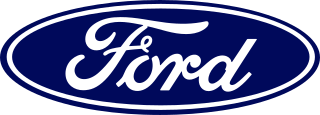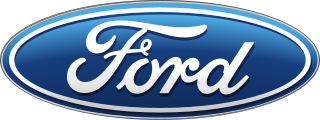External Links and References
- Ford Commodore Point Assembly Archived 2015-03-13 at the Wayback Machine
- Photograph of Ford Commodore Point Assembly Archived 2015-03-22 at the Wayback Machine
| United States | |||||
|---|---|---|---|---|---|
| Europe |
| ||||
| Other locations |
| ||||
Commodore Point is a former Ford manufacturing plant in Jacksonville, Florida. It was located on the banks of the St. John River just below the Mathews Bridge. It occupied the former Bentley Shipyards. The factory began operations in November 1924 building the Ford Model T followed later by the Ford Model A and was closed in 1932, where Ford continued to use the building as a parts distribution center until 1968.

An assembly line is a manufacturing process in which parts are added as the semi-finished assembly moves from workstation to workstation where the parts are added in sequence until the final assembly is produced. By mechanically moving the parts to the assembly work and moving the semi-finished assembly from work station to work station, a finished product can be assembled faster and with less labor than by having workers carry parts to a stationary piece for assembly.

An original equipment manufacturer (OEM) is generally perceived as a company that produces non-aftermarket parts and equipment that may be marketed by another manufacturer. It is a common industry term recognized and used by many professional organizations such as SAE International, ISO, and others.

The Ford Model T is an automobile that was produced by Ford Motor Company from October 1, 1908, to May 26, 1927. It is generally regarded as the first affordable automobile, which made car travel available to middle-class Americans. The relatively low price was partly the result of Ford's efficient fabrication, including assembly line production instead of individual handcrafting. It was mainly designed by an American and two Hungarian engineers. The Model T was colloquially known as the "Tin Lizzie", "Leaping Lena" or "flivver".

Ford Motor Company of Australia Limited is the Australian subsidiary of United States-based automaker Ford Motor Company. It was founded in Geelong, Victoria, in 1925 as an outpost of Ford Motor Company of Canada, Limited. At that time, Ford Canada was a separate company from Ford USA. Henry Ford had granted the manufacturing rights of Ford motor vehicles in the British Empire, to Canadian investors.
Special Vehicle Operations (SVO) is a term used throughout Ford Motor Company's global operations as a performance group, first used in America as Ford's own "speed shop", with a separate budget from Ford's regular operations. In 1993, the group was renamed Special Vehicle Team (SVT). As of 2015, SVO had been owned by Jaguar Land Rover, creating high performance versions of models such as the Jaguar F-Type and Range Rover Sports.

The Highland Park Ford Plant is a former Ford Motor Company factory located at 91 Manchester Avenue in Highland Park, Michigan. It was the second American production facility for the Model T automobile and the first factory in history to assemble cars on a moving assembly line. It became a National Historic Landmark in 1978.

The Ford Piquette Avenue Plant is a former factory located within the Milwaukee Junction area of Detroit, Michigan, in the United States. Built in 1904, it was the second center of automobile production for the Ford Motor Company, after the Ford Mack Avenue Plant. At the Piquette Avenue Plant, the company created and first produced the Ford Model T, the car credited with initiating the mass use of automobiles in the United States. Prior to the Model T, several other car models were assembled at the factory. Early experiments using a moving assembly line to make cars were also conducted there. It was also the first factory where more than 100 cars were assembled in one day. While it was headquartered at the Piquette Avenue Plant, Ford Motor Company became the biggest U.S.-based automaker, and it would remain so until the mid-1920s. The factory was used by the company until 1910, when its car production activity was relocated to the new, bigger Highland Park Ford Plant.

The Ford River Rouge complex is a Ford Motor Company automobile factory complex located in Dearborn, Michigan, along the River Rouge, upstream from its confluence with the Detroit River at Zug Island. Construction began in 1917, and when it was completed in 1928, it was the largest integrated factory in the world, surpassing Buick City, built in 1904.

The Twin Cities Assembly Plant is a former Ford Motor Company manufacturing facility in Saint Paul, Minnesota, United States, that operated from 1925 to 2011. In 1912, Ford's first assembly and sales activities in Minnesota began in a former warehouse in Minneapolis. By 1925, Ford had relocated its local operations to the bluffs above the Mississippi River in the Highland Park neighborhood of Saint Paul. In 2006, Ford officials announced plans to close the factory, though it operated for three years past the 2008 closure date initially announced. At the time of its closure, it was the oldest Ford plant in continuous operation. The plant's final truck was completed on December 16, 2011. All of the facility's buildings were demolished and the site underwent extensive environment remediation in the late 2010s, paid for by the Ford company. Following a multi-year planning and community engagement process, the site was sold to the Ryan Companies, who began redevelopment of the site in 2020 as Highland Bridge, a 122-acre residential and commercial district.

The Former Ford Factory is located along Upper Bukit Timah Road at Bukit Timah in Singapore. It is the place where the British Army forces surrendered to Imperial Japanese Army forces on 15 February 1942 after the Battle of Singapore. The Old Ford Motor Factory had since been gazetted as a National Monument in 2006, and converted into an exhibition gallery and archive named Memories at Old Ford Factory. The permanent exhibition gallery showcases life in Singapore under Japanese wartime rule, and the exhibition is one of the continuation of final battles from Pasir Panjang and at Fort Siloso.
Triple Eight Race Engineering, is an Australian motor racing team competing in the Supercars Championship. The team has been the only Brisbane based V8 Supercar team since its formation, originally operating out of the former Briggs Motor Sport workshop in Bowen Hills before moving to Banyo in 2009. Since taking over the former Briggs Motor Sport team during the 2003 season the team has won the Supercars driver's championship ten times, the team's championship eleven times and the Bathurst 1000 nine times.

The Omaha Ford Motor Company Assembly Plant is located at 1514-1524 Cuming Street in North Omaha, Nebraska. In its 16 years of operation, the plant employed 1,200 people and built approximately 450,000 cars and trucks. In the 1920s, it was Omaha's second-biggest shipper.

A substantial car industry was created in Australia in the 20th century through the opening of Australian plants by international manufacturers. The first major carmaker was Ford Australia and the first Australian-designed mass production car was manufactured by Holden in 1948. Australian manufacture of cars rose to a maximum of almost half a million in the 1970s and still exceeded 400,000 in 2004. Australia was best known for the design and production of 'large' sized passenger vehicles. By 2009 total production had fallen to around 175,000 and the Australian market was dominated by cars imported from Asia and Europe.

Ford Motor Company is an American multinational automobile manufacturer headquartered in Dearborn, Michigan, United States. It was founded by Henry Ford and incorporated on June 16, 1903. The company sells automobiles and commercial vehicles under the Ford brand, and luxury cars under its Lincoln luxury brand. Ford also owns Brazilian SUV manufacturer Troller, an 8% stake in Aston Martin of the United Kingdom and a 32% stake in China's Jiangling Motors. It also has joint ventures in China, Taiwan, Thailand, Turkey, and Russia. The company is listed on the New York Stock Exchange and is controlled by the Ford family; they have minority ownership but the majority of the voting power.

Genk Body & Assembly was a Ford Motor Company automobile factory in Genk, Belgium, just over an hour to the west of the company's European head office in Cologne, Germany. The site spanned 6,135,630 square feet. The plant employed approx 4,300 workers in 2014.

Ford Romania is an automobile manufacturing company operated by Ford of Europe, located in Craiova, Romania.
Long Beach Assembly is a former Ford Motor Company assembly plant located at the Cerritos Channel on Terminal Island, at 700 Henry Ford Avenue in Long Beach, Southern California. It operated from 1930 through 1958.

Belarus had third by volume part of automotive industry of the Soviet Union with near 40,000 annual production. Since that times Belarus specializes on production of own designed superheavy, heavy and middle trucks mainly plus post-Soviet developed buses, trolleybuses and trams. Auto manufacturers in Belarus include MAZ, BelAZ and Neman.

Automotive industry in Vietnam is a fast growing sector, mainly reliant on domestic sales. All currently produced models are designed abroad by foreign brands, and many rely on knock-down kit production. Due to high import taxes on automobiles, the Vietnamese government protects domestic manufacturing. Although Vietnam is a member of the ASEAN Free Trade Area, automobile imports fall under an exception. Since January 1, 2018, the 30% import tax has been discontinued as part of ASEAN agreements. Currently, the Vietnamese motor industry is not deemed competitive enough to make exports feasible. As of April 2018, 85% of car sales in Vietnam were produced domestically from CKD kits.